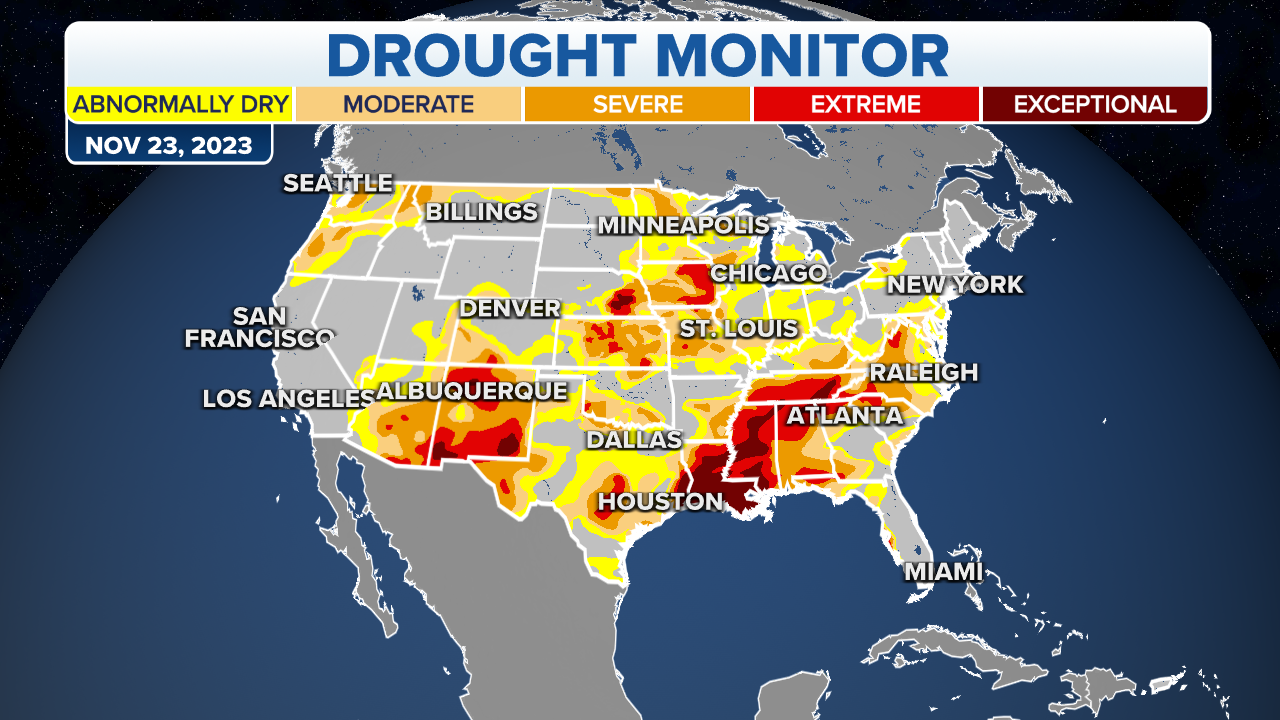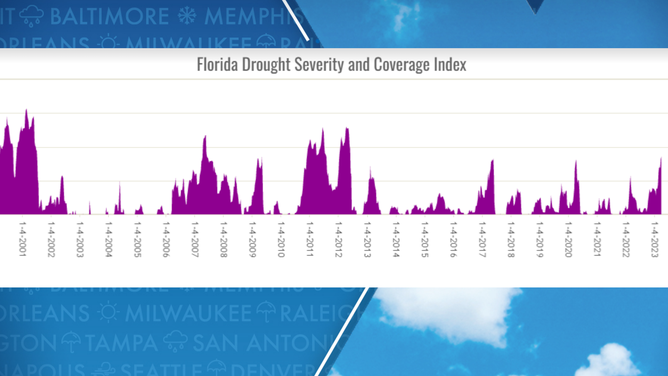Florida drought worsens to levels not seen in more than a decade
According to the U.S. Drought Monitor, 88 percent of the state is experiencing abnormally dry conditions, with more than half the state in a severe drought. According to data, the state is in its worst drought since 2012.
Prescribed burns used to help prevent wildfires
The U.S. Forest Service are currently doing controlled burns to get ahead of fire season. Jerry Perez, with the U.S. Forest Service, talked about the benefits of controlled burns.
An unusually dry winter and start to spring in the Sunshine State means many communities are facing a deficit of precipitation which is always a dangerous ingredient when the state’s annual dry season is underway.
Nearly all major cities from Jacksonville to Key West are reporting a deficit, with Orlando seeing only 1.89" of rain since the start of the year and Naples reporting less than an inch.
The lack of rainfall has resulted in 88 percent of the state experiencing abnormally dry conditions, with more than half th Florida Peninsula in a severe drought.
The emerging drought has helped trigger dozens of wildfires, with more than 5,200 acres torched, according to the Florida Forest Service.
One of the larger wildfires is burning in Central Florida, where more than 3,200 have been destroyed in Volusia County. Firefighters say most of the flames are in rural areas near the Tiger Bay State Forest, and there are no reports of damaged homes.
WILDFIRES GROW IN FLORIDA AMID INTENSIFYING DROUGHT
According to the U.S. Drought Monitor, 55 percent of the state is experiencing severe drought conditions, which continues to grow by the day.
Usually, during a severe drought, crop losses are likely, communities start to experience water shortages and restrictions are implemented.
Firefighters say Hurricanes Ian and Nicole have likely intensified the fire threat due to downing vegetation, which can quickly burn during wildfires.

(SOURCE GOES HERE IN PARANTHESES)
The National Interagency Fire Center has warned for the better part of a year that the Sunshine State was expected to be impacted by drought conditions and experience increased wildfire dangers.
"The Florida Peninsula will continue with a forecast of above normal significant fire potential through at least May, due to worsening drought, above normal temperatures, and forecast below normal rainfall. The early green-up has accelerated the depletion of water left behind from 2022’s hurricanes, with National Aeronautics and Space Administration (NASA) Short-term Prediction Research and Transition Center (SPoRT) data indicating that soil moisture is below the 10th percentile over a good part of the central and southern peninsula," the NIFC wrote in its latest outlook.
SEE THE MASSIVE ALLIGATOR FOUND LURKING IN A SOUTH FLORIDA SWAMP

Florida drought coverage by year.
(FOX Weather)
History repeats itself: Similar atmospheric conditions were in place in 2012
In 2012, a decaying La Niña, similar to the state the world is in now, led to widespread drought conditions in the Southeast and Florida.
At the time, forecasters reported near-record warmth in the state and unusually low amounts of rainfall.
The combination of the heat and lack of precipitation led to large wildfires breaking out that were visible from space.
During the spring, a large fire burned in the Osceola National Forest near the Florida-Georgia line. The fire was dubbed the ‘County Line Fire’ and destroyed more than 30,000 acres, but it was the smoke that had the greatest impacts.
Depending on the wind direction, major cities such as Tallahassee and Jacksonville saw many days of poor air quality and smoked filled skies.

A large fire in Osceola National Forest burned more than 30,000 acres and sent smoke Florida in 1012
(NASA)
Fortunately, the FFS has not reported any large wildfires such as the ‘County Line Fire,’ but authorities continue to stress that as the drought persists the dangers for wildfires will increase.
As an effort to try to mitigate the threat of fires growing out of control, at least nine Florida counties have enacted burn bans that prohibit the camp fires, bonfires and limits the burning of trash and yard debris.
